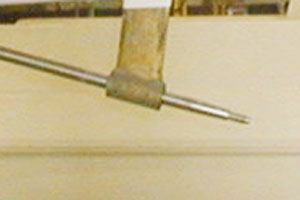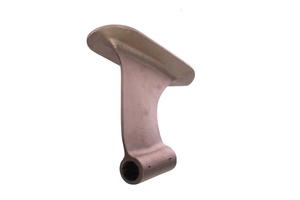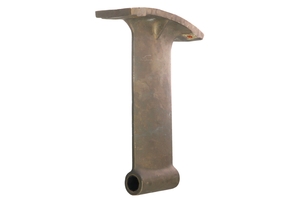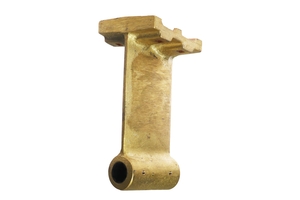
Not a sight you want to see on your next haul out. Tend to those loose dock lines before shifting into gear to prevent the dreaded prop line wrap.
Watch out for the line!
Struts have a long life. The foundry who casts them says to expect 10 to 15 years. In practice we see struts much older than that. But don't expect them to last forever. They do have a finite lifespan. Here are other reasons your strut may need to be replaced:
• A dangling dock line was sucked into the prop while under power. Your diesel's substantial torque will bend the strut toward the cleat every time.
• The strut was damaged while replacing the cutlass bearing.
• The strut and shaft were bent when a lifting strap was inadvertently placed in the wrong location.
• Electrolysis caused by inadequate protection by a zinc anode weakened the strut.
• The boat is being re-powered.
Two ideas that may prevent damage to your strut
The best way we’ve found to keep lines out of the prop is to appoint a “dinghy captain”. This should not be the skipper, but another member of the crew who will take the job seriously. As soon as anyone announces they’re going to start the engine, the dinghy captain springs into action. Heading to the stern, they check for any sheets or dock lines in the water. They then immediately haul in the dinghy by its painter and snubs it right up to the boat. This ensures the painter cannot fall into the water and wrap itself around the prop. Having a person responsible for this important role can eliminate a lot of headache.
The alloy used by the manufacturer is military grade 70 manganese bronze. Selected for its corrosion resistance and strength, it is still as much as 25% zinc. With age, a process called “bleeding” can occur when the iron and zinc, elements in the alloy, come to the surface significantly reducing the strength of the bronze. This can make a strut's normally bronze color appear pink. Although struts in a Catalina are typically isolated from the boat's electrical system, zincs are recommend for boats in salt or brackish water... and especially for boats in "hot" marinas with a lot of stray electrical current.















